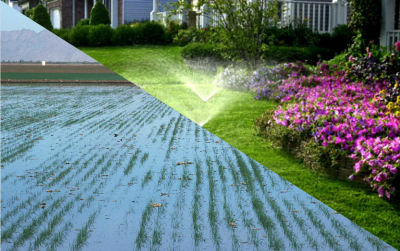Future of Irrigation Water Demand Under a Changing Climate
Modeling studies for years warned of increasing evapotranspiration rates and therefore irrigation water demands due to the changing climate and warming atmospheric conditions. As this prediction did not fully materialize in observational studies over the following years, a recent body of literature linked this dichotomy to vegetation response to rising atmospheric CO2 concentrations. In this study, however, we find that the vegetation response to the warming and drying atmospheric conditions, via regulation of stomata resistance, alone can offset the expected increase in evapotranspiration rates and irrigation water demands that would otherwise result from abiotic processes represented in the earlier modeling studies.
Findings of this study can help managers and decision makers, concerned with water resources and demand, to have more realistic interpretations of studies that examine climate change implications for evapotranspiration and water demand. This study shows that care should be taken in interpreting studies that use temperature-based metrics such as the Palmer Drought Severity Index or other metrics based on atmospheric moisture demand or potential evapotranspiration. When considering plant responses directly to warming and drying atmosphere, or increasing CO2 concentrations over time, changes in evapotranspiration and irrigation water demand may be lower than indicated by such metrics.
We use California as a testbed where we focus on vast irrigated urban and agricultural areas to assess the impacts of the warming climate on evapotranspiration and irrigation water demand. We show that as the atmospheric temperature and humidity depart from the ideal conditions for transpiration, regulation of stomata resistance by stressed vegetation limits the increases in evapotranspiration rates that would otherwise result from the increasing demand for moisture in the warmer atmosphere. As a result, warmer atmospheric temperatures have minimal implications for nonwater limited evapotranspiration rates and irrigation water demand.

